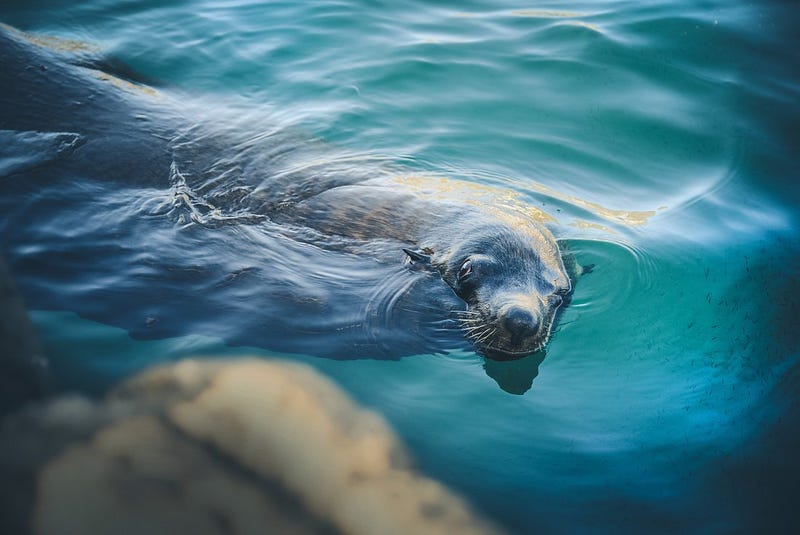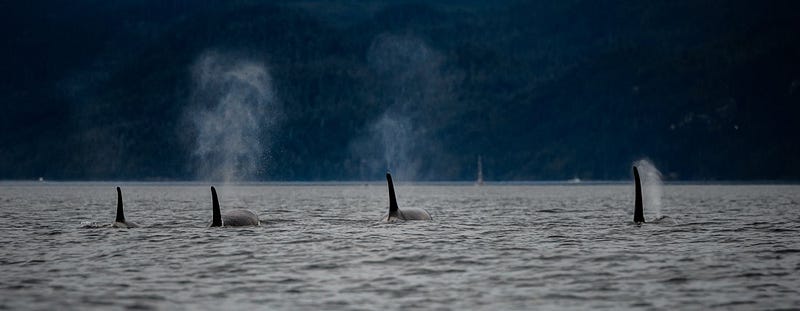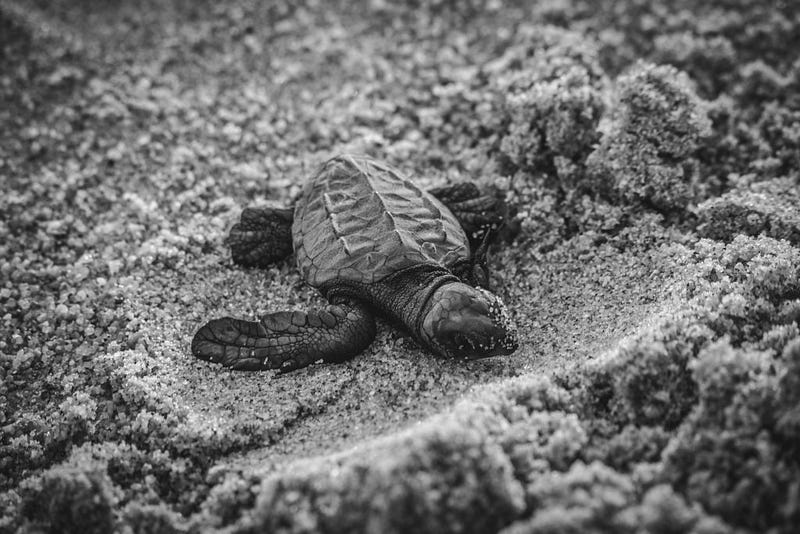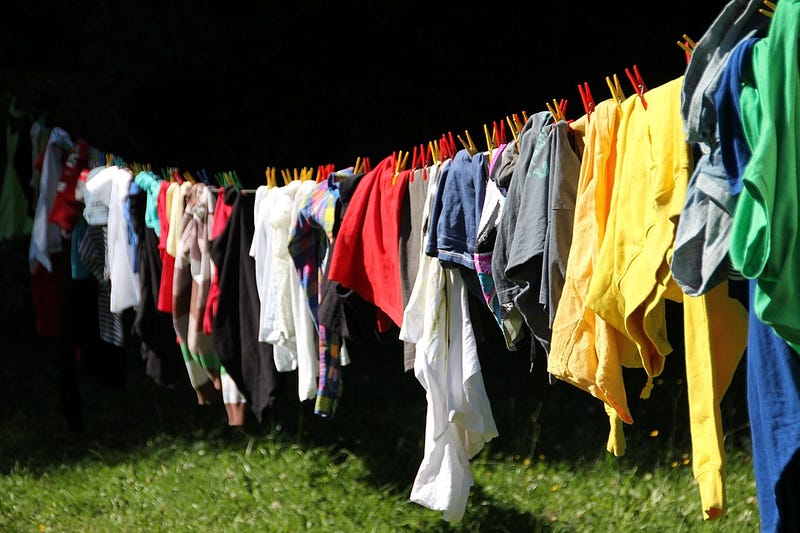All About
Shifting our thoughts and actions
to create lasting change that contributes to the Common Good

After I earned my MA degree in ethical leadership in the Spring of 2006, one of the major lessons that stayed with me was the understanding that real change — that is ethical and accountable, the kind that lasts — does not happen overnight, it takes time.
For an ethical leader (and the average person seeking to change destructive habits and live more ethically), this means being dedicated to the best possible outcome and positive impacts for all involved. It also means caring more about long-term results than about immediate satisfaction. This requires thoughtful, engaged patience, and an understanding of the time and timing required for lasting change to be established and maintained over time.
Impatience, shortcuts, quantity over quality, greed, abuse of power and control, and leaning on loopholes and convenience ultimately degrade long-term progress, health, and sustainability. These practices also can have a poor effect on morale, energy levels, trust, and confidence on a team.
Although we may enjoy and see short-term progress by doing these things — in most cases, that kind of progress won’t last, and if it does, it will be riddled with compromises and harm to health, esteem, integrity, and healthy communication and systems.
For example, when we first bring a fish home to the aquarium, there may be an impatient desire to get the new fish into the aquarium right away. If we give in to that selfish impatience without gradually acclimating the fish to the new water and temperature, the fish can go into shock, become injured, sick, and/or die. Sometimes the shock and subsequent illness or injury from that initial impatience won’t be immediately visible — it may happen days later or a month later, but the harm was done. Taking the 30 minutes to 2 hours or longer, that a new fish may need to acclimate to the new environment makes all the difference.
So it is with cutting corners to achieve something — it can give the satisfaction of visual completion and short term satisfaction, but at what ultimate cost to relationships, health, and a future ability to really thrive?
We also need to establish special cycles of time and space to receive feedback on current: needs, practices and approaches, communication, use of time, delegation, efficiency, transparency, ideas; and inclusivity of processes, systems, and structures. It is important to listen deeply and really take the time to benefit from all the feedback. Responded to valuable feedback and implementing thoughtful changes based on feedback is invaluable, and helps to boost energy levels and trust.
In addition, we need to take the time to evaluate ourselves (as leader, or leader of one’s own life) alongside the work, project, team, and/or organization at regular intervals. Ultimately, we cannot administrate, manage, or lead effectively — we cannot change destructive or problematic habits, and systemic problems well — until we address our own strengths, weaknesses, and evaluate our own personal blind spots via feedback.
How can we evaluate others and hold them to standards if we are not doing so for our selves? No matter how far we’ve come, the need for this ongoing internal practice remains true.
How can we, as ethical leaders/individuals, best serve our purpose, the people we work with, our teams and/or those in our care? What are some of our weaknesses and needs that we need to manage well in order to ensure that we are able to do our best in leadership?
The leader sets the tone for everyone else. The way that a leader deals with problems, delegates work, forms teams, addresses conflicts and problems…becomes a standard for everyone else. The leader establishes what is acceptable and not acceptable through: tone, actions, style, methods, policies, presence, and follow-through.
To effect real, positive, lasting change we must be willing to do the kind of work and collaboration that establishes new pathways in place of familiar, comfortable, dysfunctional ones. We must be willing to see systemic privilege and discrimination, and to see past assumptions that run on autopilot. We must be willing to admit mistakes, learn, and correct errors along the way with transparency.
The ethical leader asks,
“How can I best serve my purpose, my team/employees/clients/customers right now, this week, and for the long haul? How can I create a healthy, thriving system that is sustainable, transparent, and energizing — for the long haul?”
The real answers require extra effort, time, and resources. We may need to consult with experts, conduct experiments and trial runs internally with the team, we may need to stop productivity to deal with internal issues or conflicts that need to be addressed, mended, and restored.
The real answers also include the importance of taking the time to create and maintain effective teams — supporting them without micromanaging, delegating and communicating with clarity, addressing issues and questions, and then being able to walk away with peace of mind, trust and knowing. If that isn’t possible, then there is a lot of work to be done, and it won’t happen overnight.
Being able to trust a team to run on its own means that, as a leader, you have provided all the information, encouragement, resources, and tools required, and you have successfully built a team that can fulfill the clearly stated goals. This hard work pays off by then being free to address the big picture issues while the details are left in capable hands that report back.
If we don’t have a team, it may mean doing a lot detailed work to establish a healthy system that works for our business and our lives. There has to be a willingness to do boring and disliked tasks sometimes. There has to be an awareness that the ways we plan, act, and work each day is shaped by our long-term goals and envisioned benefits. And, those long-term goals are hopefully aligned with inclusive, sustainable, healthy practices.
There are many steps involved in getting to the point where we have implemented enough planning, building, learning, listening, and action to be able to sit back and know that we are on a better path.
Yet, the results? The results may not be evident right away. Much like SEO, it takes time to see results, and much of it depends on quality work.
Long-term results depend on how healthy or not healthy things are to begin with. Yet, the payoff for long-term top to bottom change is: greater satisfaction, productivity, creativity with better results, and a system of collaboration that is strong and can last. In fact, if we are changing in order to be more sustainable, healthy, inclusive, diverse, adaptable, and/or more ethical and we really commit to it, we will indeed see immediate and long-term benefits. Yet, there will need to be room for mistakes, learning, and course correction too. Depending on how bad things were, some things may have to be as drastic as starting over. But, it doesn’t have to be in every way. Surely, if we are interested in improvement and healthy leadership, we must have been doing good things that we can adapt and build upon. So, it is also important to resist the urge to throw the proverbial baby out with the bath water.
How do we get there? We have to start with ourselves. All of this is applicable to each of us. We are the ethical leaders of our lives, or not. We are the administrators of our lifestyles and habits.
When we keep our standards high and inspiring, we have motivation to do better: personally, independently, and in collaboration. That doesn’t mean that we always hit the high mark, but it means that we continue to believe in our values and seek to live them out.
On bad days, we implement patience, gentleness, and kindness. On average days we encourage a bigger vision while taking care of all the steps to get there, in order, one by one.
When we instill standards of healthy communication and effective, responsive accountability and pathways for it — we begin to build lasting systems for positive change. This can be humbling, as it will require times when we must admit mistakes, thoughtlessness, or weaknesses, and make corrections. But, ultimately, that ability to remain grounded and accountable, with a certain amount of vulnerability, becomes a strength, and the glue that holds everything together.
Even if we need to work quickly with intense deadlines, there are still ways to implement systems within culture and operations that are ultimately healthier, refreshing, sustainable, and invigorating for the long haul.
If we aren’t taking measures to ensure that mental and physical health are accounted for, with breaks and healthy outlets, that will have a negative effect on the quality of our changes. If we aren’t recognizing how we may be perpetuating unhealthy practices, or putting our ego needs above all else, then we probably won’t really hear the feedback we have asked for. We must have a true desire for change and improvement. We must be willing to truly listen to and fully consider constructive feedback.
We simply must stop and take the time to listen, to adapt, and to respond.
We need to find ways to relieve the pressure of intense deadlines in fun and healthy ways that fit in and make sense with our team/environment/goals. Work places that deal with intense deadlines in healthy ways makes the process worthwhile, meaningful and an exciting challenge — rather than draining and miserable.
All of this is applicable to each of us. We are the ethical leaders of our lives, or not. We are the administrators of our lifestyles and habits.
In the face of challenges and setbacks, the patience to grow real, lasting change remains a core value for the ethical leader. The big picture is not lost, the big goal is kept central during setbacks. And, core motivation includes knowing that: facilitating healthy restoration of systems (relational, environmental, etc.) eventually translates into returns and legacies of lasting value. In this same way, each of us may apply values and more sustainable practices, in order to navigate and wield the authority of leadership for our own lives, and increasingly, in the best ways possible.
Begin With Yourself: Understanding Habits
This approach and these lessons are adaptable and applicable for most everyone. But where to start? We want to begin the long, demanding, and worthwhile, rewarding path by being aware of and changing our own habits and autopilot blind assumptions/norms. In beginning this process on the personal level, we may then effectively respond to changing needs, emergency situations, and a troubled human world and Environment in flux.
To do this, we must first grasp what habit really is.
Creating a habit demands a considerable investment of our time and energy. Much like Artificial Intelligence requires tons of data in order to learn, grow and operate well — human habits are also established by tons of repetition and concerted effort in order to become autopilot functions.
HABIT is defined as: “something done often and regularly; a behavior or action repeated regularly so as to have become automatic.”
Some synonyms for HABIT include: routine, pattern/norm.
The idiom, to be “on automatic pilot” can be defined as: “completing a task without awareness or thinking because it has been repeated so many times that the function is automatic.”
With autopilot, in this sense, the meaning also connotes a degree of unconscious, mindless behavior.
Many parts of operating and driving a vehicle become habitual — we go on autopilot with many aspects of driving. We also operate with a good measure of trust for the maps in our memories that help us to navigate in the area in which we live without much, if any, thought. It is much the same in navigating and operating within our homes and at work each day. Some of us have mental memory maps so well-defined and subtly present in our neural pathways that we can even walk with our eyes closed (or in the dark) and find our way around the house (or neighborhood) with little to no problems.
In “Primal Leadership” by Daniel Goleman, the author explains how habits form strong, rigid neural pathways in the brain. These pathways are solid and resistant to change. Yet, the author reported, it was discovered that those pathways can be altered and changed — however, it takes a lot of conscious effort and persistence to succeed in doing this.
Repetition is the key to creating a habit (healthy, neutral, or destructive) and to set a more fixed pathway in the brain, and therefore, in one’s life. Anyone who has developed a somewhat destructive habit can attest to the effort and determination required in order to alter that habit.
Inner Peace Matters

One necessary component for making change that lasts is to achieve a complete sense of resolve about the change that is needed.
A resolute belief or motivation is the fuel that transforms a habit. Being free of any conflicting feelings or beliefs regarding the needed change is quite necessary, in order for any of the effort to succeed for the long-term. If even a quarter of our mind and/or heart is conflicted about changing the habit, the effort will most likely fail in the long-term. Most often, it would happen via subconscious and subtle sabotage, or a very conscious and clear defeated or jaded attitude.
People may turn to hypnotism and visualizations to undo self-sabotaging behavior that is resistant to the desire to change. Sometimes this is successful, sometimes it isn’t. Deep down, the knots must be untangled, with visualization and hypnotism, or by other methods and modalities. However it is done, the deeper issues of conflicted feelings, thoughts and beliefs regarding the habit must be found, faced, and resolved consciously.
Psychologists often say that a bad habit often continues because a person is gaining something from it, even when they say they want to stop. Perhaps an unconscious bit of the person likes the negative attention, or ties it to something learned in childhood. Sometimes, there is a hidden sentimentality, judgment, pride, or sense of entitlement attached, no matter how veiled. Whatever it is, we have to be willing to face and evaluate our own inner workings and inner saboteur as we seek to change habits and lifestyle for the better. It is essential that we search our own thoughts and feelings regarding any needed change that must take place. Right along with this searching, is prioritizing time to process issues, and to begin to enter into the needed change with deeper resolve.
During and after that, asking for feedback from honest and trusted others is also important. It is important to choose to hear feedback from those who will tell the truth, not what we want to hear — yet also those who care about us and want us to succeed in these positive changes. In this way, we gain perspective and new ideas. It is an ongoing practice of transparency and accountability — first in relationship to self, and then to others. Here is an example for perspective. Please read it both literally and figuratively:
Yard Restoration
I have moved into two different houses where the yards needed restoration. The first had been treated by pesticides for years, but had fertile soil, and lots to work with. It took about three years for the yard to fully recover — and became a thriving oasis of native plants and a refuge for wildlife. The second also had been treated for pesticides at one time, and the soil was greatly depleted and mostly sand. This yard has taken longer to recover, and still can’t fully recover without amending the soil. A big leap to lushness and progress was not evident until five years had passed. That being said, I am no expert in restoring yards, and I do the little by little approach in that regard. Additionally, this second yard hasn’t been a main priority like the other was. In aiming to restore the second yard — without expertise, or a lot of dedicated time, or a lot of invested money/resources — the long term results took longer.
Someone once told me that when they moved in to their new house, their yard had been treated yearly with pesticides as well. They took an intensive approach, investing resources into immediate change that would improve year after year. They had all the grass removed and planted clover as a ground cover instead of grass. This ground cover is organic and provides food for bees, and requires little, if any mowing.
While I didn’t immediately invest in overall change for the second yard, I did effect overall change in one way. Without pesticides and herbicides involved, I was able to allow pollinator ground cover to take over naturally. This took longer, yet it worked well. I allowed the plantain, clover, violets, and dandelions to spread, while planting native plants, and allowing them to propagate naturally as well.
Consciously Changing Habits

In committing to needed change through ongoing self-reflection regarding thoughts, choices, and habits — we will be able to maintain a vivid and thriving approach that is more in tune with current and changing needs and realities. In addition, we are then able to be in tune more authentically to who we are, and who we are becoming. This can serve to boost confidence, mood, and motivation. This also then, translates into new ways of approaching leadership, management, care, and facilitation for others.
Our thoughts, once observed, reveal much. In observing and evaluating our thoughts, we see, little by little, or all at once — what we have left to autopilot each day. Most likely some of it will be unwanted, outdated, and perhaps even counter-productive to our well-being and most desired goals for life and work. Some of it may not even really be ours, but expectations and distorted voices that belong to other people (from the past or present), and that were put upon us. We can take that weight off once it is observed for what it really is.
After we make progress personally — re-shaping, discarding, and transforming some of our thoughts and habits — the ongoing approach remains the same. We begin by observing and evaluating our thoughts and actions each day. We maintain a list of questions for ongoing self-evaluation check-ins. Are we:
- Contributing to positive long-term goals with our daily thoughts, habits, and actions?
- Noticing and consciously choosing which thoughts are maintained?
- Happy with our personal process and the results?
- Noticing and addressing details, feelings, needs, inspiration? or ignoring them?
- Noticing harmful elements, ingredients, or dynamics? or ignoring them?
- Making the most of the choices available each day?
- Allowing ourselves to remain in a rut of looped thoughts?
- Allowing ourselves new options, new thoughts, new approaches?
With ongoing discernment regarding our thoughts, habits, and daily actions — we are instilling healthy, conscious pathways that can better empower ourselves and others. Another example for this process is my book, Recipe For A Green Life. It is a complete guidebook for this kind of holistic process, focusing on lifestyle and sustainability.
All of this requires a dedication to some amount of life-long learning. Finding pleasant ways to maintain interest and curiosity regarding the “who, what, when, where, how, and why” of anything we are choosing and putting our energy into is most helpful. Personal choices (at home, at work, and beyond) — from the smallest, and most overlooked, to the biggest — all matter, to some degree, and at some level. Start small, start big — start however this all works best for you, and continue in whatever ways and at the pace that allows you to keep going in the right direction. Consistently showing up in this way helps us to more easily stay current and healthy, and more primed to facilitate the process for others too.
Truth Telling
It can be, and is important that we share our process and discoveries (when we can, and as appropriate) with straightforward honesty, integrity, and reasonable kindness. Sometimes the truth is ugly though. Do we wrap it in kindness? Whenever possible, yes. Still, absolute gentleness at all times is not possible or realistic. There are exceptional times when even kind honesty can feel harsh. And there are times when being too kind and too forgiving is a disservice to ourselves and others.
The standard mode of operation for the ethical leader is: to establish trust with honesty, which is upheld by integrity and kindness. Even better, if that honesty, integrity and kindness is informed with impartial ethics and wisdom, which remain unswayed by status or privilege.
Being a truth-teller can make us very lonely at times, especially when others are playing games, and don’t want to play fair or to be healthy. However, as a leader, being a truth-teller is a needed and necessary calling. And ultimately, that is rewarded with connections and teams of integrity and advanced skills. That is what takes us to the next level. And, that is why the ethical leader must be a truth-teller — who utilizes kindness, integrity, and impartial wisdom at the helm. This ability comes from living it out on a personal level— by having the ongoing practice of self-evaluation in effect, which creates the integrity in the first place.
By dedicating ourselves to this considerable, yet worthwhile and rewarding effort, we make progress in real time, and that grants us a warranted hope in momentum and strength, which is gained by right action.
May we go forward, onward, more mindfully, shifting to more healthy, productive habits and leadership…on all levels. May these new and healthier habits take hold and increase exponentially — dynamically contributing to a great healing and new positive pathways for the future and all life on Earth.
*Originally published on my old website, Wild Clover.






